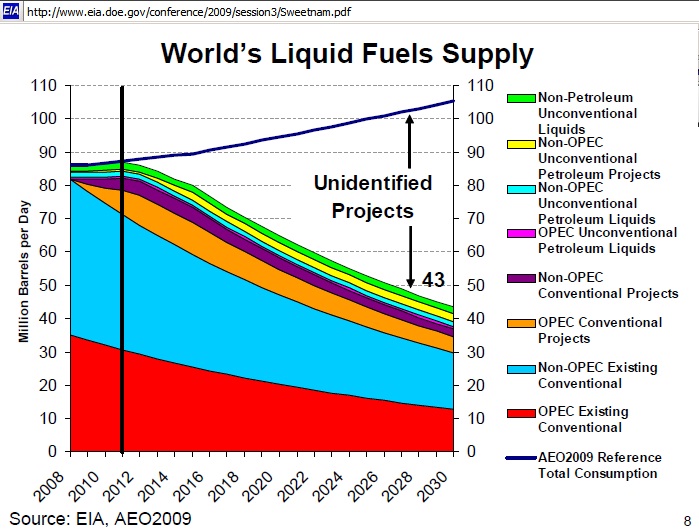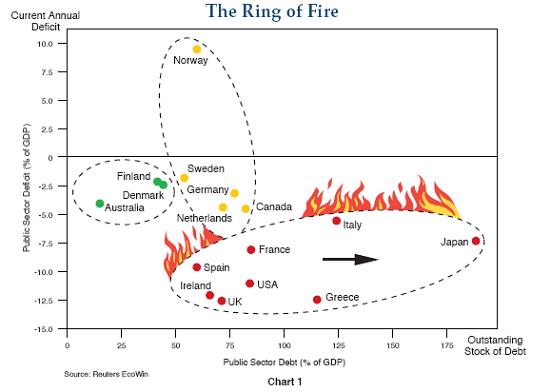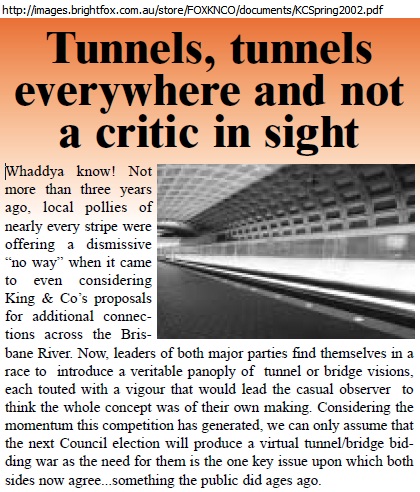Northern Link gets the go-ahead
Brisbane City Council’s $1.7 billion Northern Link tunnel has received state government approval, paving the way for work to begin later this year….The Federal Government has chipped in $500 million to the $1.7 billion project, which is projected to provide 1400 jobs during construction and 85 jobs when it is running in 2014.
http://www.brisbanetimes.com.au/queensland/northern-link-gets-the-goahead-20100423-ti1b.html
That’s around $300 K pa per job – not a cheap job creation.
Summary
This approval is based on a transport strategy which was conceived and pushed by King & Co’s Tom Richman a decade ago and then eagerly picked up and promoted by Lord Mayor Campbell Newman in 2004 during his election campaign. The road tunnel boom has since then gained its own, seemingly unstoppable momentum.
Since 2004, however, several factors have impacted on the financial viability of road tunnels:
- global crude oil production started to peak in 2005, leading to markedly higher oil prices and oil price volatility
- the Australian public was repeatedly warned about an impending oil import crisis as local crude oil production will decline
- the Global Financial Crisis, triggered by peak oil itself and now morphing into sovereign debt failures – will make Australia’s access to international money markets more expensive
- higher interest rates, partially caused by new debt from stimulus packages, now reduce the paying capacity of motorists for tolls as mortgage repayments take priority
- spectacular road tunnel failures in Sydney and tollway revaluations in Melbourne, resulting from traffic forecasts not meeting expectations, lead to financial losses in Private Public Partnerships
- a badly managed share float for Brisconnections further spooked investors and resulted in bad publicity
- the need to reduce CO2 emissions in the transport sector is acknowledged but is in total conflict with a continuing road tunnel strategy. Documentation promoting freeway developments is full of sustainability jargon, pictures of bike paths and graphs on bus lanes, but completely contradictory to and disconnected from actual project objectives.
Despite all these events, both the Brisbane City Council and the State government stubbornly continue with a road tunnel strategy which is now outdated and based on following untested assumptions:
- Australia will always be able to import all the oil we need
- Peak oil will evolve peacefully without oil wars and other conflicts in the Middle East
- Population growth will result in oil production growing at the same rate
- Coal exports can continue growing for many decades to come
- There is sufficient carbon free primary energy to replace both declining oil production and provide for growth in traffic
- Alternative fuels are cheaper and easier to produce and handle than conventional oil
- Electric cars will be introduced in large numbers in the next 10 years
The benefit cost ratio is very low at 1.2, meaning a meagre 20% return over the discounted value of the investment for the full 45 year period. Any oil crisis will wipe out most of the benefits and the net present value may turn negative. Who will be responsible for this risky investment?
(1) Introduction and outlook for the next years
That’s how it all started, in 2002:
But the world has changed since then and will continue to change fast in the next years.
In the year of the planned completion of the tunnel, in 2014, Australia will be in a deep oil import crisis. Our oil import dependency is a whopping 80%
http://crudeoilpeak.info/australian-graphs
 The next oil crunch is expected for 2012. Slide 8 from the EIA, DoE
The next oil crunch is expected for 2012. Slide 8 from the EIA, DoE
http://www.eia.doe.gov/conference/2009/session3/Sweetnam.pdf
The next graph shows Australian crude oil production declining by 85% over the next 10 years compared to Brisbanes’s assumed travel demand by various modes (dark blue: private cars, from page 2-14 of the EIS)
 More details on the Australian crude oil decline:
More details on the Australian crude oil decline:
17/3/2010
Australian crude oil production to decline 85% over the next 10 years
http://www.crudeoilpeak.com/?p=1243
The Northern Link decision is based on following outdated documents
- The Transport Plan for Brisbane 2008-2026, which was originally designed in 2003 but has not incorporated the fact that peak oil started in 2005 http://www.brisbane.qld.gov.au/traffic-transport/roads-infrastructure-bikeways/transport-plan-for-brisbane-2008-2026/index.htm
- The TransApex plan, March 2005 http://www.northernlinkeis.com.au/pdf/BCC6190%20TransApex_PRESS.pdf
- The Northern Link EIS itself http://www.northernlinkeis.com.au/EISDocuments.html
and an optimistic interpretation of the oil vulnerability report
http://www.aspo-australia.org.au/latest/qld-oil-vulnerability-task-force-report.html
Read the full report here as PDF http://crudeoilpeak.info/wp-content/uploads/2010/04/NorthernLink_EIS.pdf
with following contents:
(2) Comments on the Northern Link EIS (chapter 2.6)
Peak oil mentioned, but consequences not really understood
Why we’ll see the end of our car culture
(3) Comments on the oil vulnerability mitigation report
Road tunnel plans pushed through before Queensland’s policy in response to the oil vulnerability report
(4) Contribution from the Federal Government
$100 + $400 million dollars wasted
(5) Fuel Availability Analysis
My submission ignored. This is what should have been included in the terms of reference
(6) Cost Benefit Analysis (chap. 15.7)
For an indexed toll starting with $3.93:
 http://www.northernlinkeis.com.au/pdf/eis/Vol1/Vol1_Chapter%205_Traffic%20and%20Transport.pdf
http://www.northernlinkeis.com.au/pdf/eis/Vol1/Vol1_Chapter%205_Traffic%20and%20Transport.pdf
The benefit cost ratio is very low at 1.2. It means a 20% return over the discounted value of the investment for the 45 year period. An oil crisis will wipe out all benefits, the BCR will be less than 1 and the net present value will turn negative. It is incomprehensible how anyone could accept such a high risk. And money will get very tight:
The following graph from PIMCO “The ring of fire” shows the debt and budget deficit situation of various countries.
Red: potential for public debt to exceed 90% of GDP within a few years’ time
Yellow and green: Most conservative and potentially most solvent
 http://www.pimco.com/EN/Insights/Pages/February%202010%20Gross%20Ring%20of%20Fire.aspx
http://www.pimco.com/EN/Insights/Pages/February%202010%20Gross%20Ring%20of%20Fire.aspx
For Australia, which is among the green countries, the global debt crisis means that access to international money markets will become more expensive. We can’t afford to waste money for road tunnels. Whatever funds are available must be spent on public transport now, not later, as the debt problem will get worse over the next years.
Previous articles on road tunnels:
7/2/2010
Which bank would now finance more road tunnels?
http://crudeoilpeak.info/which-bank-would-now-finance-more-road-tunnels
27/1/2010
Peak oil brought forward moment of truth for Lane Cove Tunnel
http://crudeoilpeak.info/peak-oil-brought-forward-moment-of-truth-for-lane-cove-tunnel
8/1/2006
How Cross City Tunnel Planners ignored peak oil
http://www.crudeoilpeak.com/?p=219
